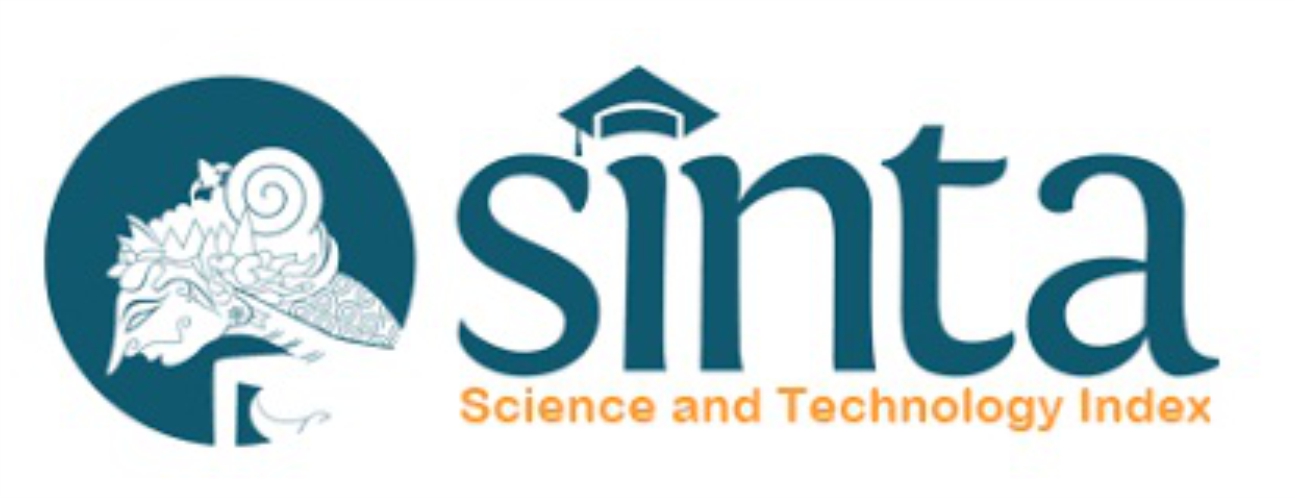Techniques for Reducing Iron (Fe) Content in Groundwater: an Article Review
Abstract
Iron is a chemical element that is found in almost every place on earth, including in well water or groundwater. Iron can be suspended in water with organic substances or inorganic solids in the form of ferrous cations (Fe2+) and ferries (Fe3+). The presence of iron that exceeds the threshold can cause detrimental effects such as corrosion of the piping, the color of the water turns brown, smells bad, and can cause health problems. The iron content in groundwater can be reduced so that it can be used as water that is fit for consumption or use in everyday life. This study aims to determine several types of techniques used to reduce iron in groundwater or well water through literature studies. Techniques covered include filtration, aeration, adsorption, coagulation, electrocoagulation, and cascade aerators. The results showed that the greatest reduction in efficiency was found in the combination type of adsorption technique and filtration technique by more than 99.1%, then followed by the electrocoagulation technique of 99.74%. From all the techniques studied in this study, it can be concluded that all techniques can reduce iron levels in which the combination of adsorption and filtration techniques is the most effective.
Keywords: Technique, reduction, iron content, groundwater
Full Text:
PDFReferences
Achmad. 2004. Environmental Chemistry. Yogyakarta: Andi.
Akbar, Said, I., and Diah, A, W, M. 2015. Effectiveness of Moringa (Moringa Oliefera Lamk) Seeds as Coagulant Iron (Fe) and Calcium (Ca). Jurnal Akademi Kimia. 4(2): 64-70.
Supardi, I. 2003. Environment and Sustainability. Bandung: PT. Alumni.
Khaira, K. 2013. Determination of Iron (Fe) Content in Well Water and PDAM Water by Spectrophotometric Method. Jurnal Saintek. 5(1): 17-23.
Hasni, N, A, M., and Ulfa, A. 2016. Determination of levels of iron (Fe) in the well water of residents around the “X” industry in Panjang District using the Atomic Absorption Spectrophorometry Method. Jurnal Analis Farmasi. 1(3): 163-168.
Febriana, L., and Ayuna, A. 2015. Study of Decreasing Iron (Fe) and Manganese (Mn) Levels in Groundwater Using a Ceramic Filter. Jurnal Teknologi. 7(1): 35-44.
Efendi, H. 2003. Study of Water Quality for Resource and Environmental Management. Yogyakarta: Kanisius.
Wijatmadi, B., and Andriani, M. 2012. Introduction to Community Nutrition. First Edition. Jakarta: Kencana.
Qomariyah, N., and Yanti, R. 2018. Quantitative Test of Iron Levels in Kelakai Plants and Their Processed Products. Jurnal Surya Medika. 3(2): 32-40.
Permenkes. RI. 2019. Regulation of the Minister of Health of the Republic of Indonesia concerning Recommended Nutritional Adequacy Rates for Indonesian People. Ministry of Health of the Republic of Indonesia. Jakarta.
Slamet, J, S. 2000. Environmental Health. Yogyakarta: Gajah Mada University Press.
Permenkes, RI. 2010. Regulation of the Minister of Health of the Republic of Indonesia Number 492 / Menkes / Per / IV / 2010 concerning Requirements for Quality of Drinking Water and Clean Water. Ministry of Health of the Republic of Indonesia. Jakarta.
Nugroho, B, A., Miswadi, S. S., & Santosa, N, B. 2014. Use of Moringa Seed Powder to Reduce Pb Levels, Turbidity and Color Intensity. Indonesian Journal of Chemical Science. 3(3): 174-178.
Hastutiningrum, S., Purnawan, & Nurmaitawati, E. 2015. Reduction of Iron (Fe) and Manganese (Mn) Levels in Groundwater Using Conventional Aeration Methods and Vertical Buffle Channel Cascade Aeration. Proceedings of the National Seminar on Chemical Engineering "Kejuangan", Chemical Engineering Study Program, FTI, UPN "Veteran" Yogyakarta. B16-1-B16-7.
Irawan, C, and Sunarno. 2019. Removal of Color and Metal Content of Fe, Mn with Adsorption and Filtration Processes. Proceedings of SNRT (National Seminar on Applied Research), Civil Engineering, Mining and Godesi. C39-C44.
Rasman, and Firdaus, M. 2018. Electrocoagulation Ability to Reduce Iron (Fe) Levels in Drilled Well Water. Jurnal Sulolipu. 18(2): 179-183.
Atmono, Natalina, Kumaidi, D. 2019. Reducing Iron (Fe) Content Using Tilt Angle Variation with the Cascade Aeretator Method. Jurnal Rekayasa, Teknologi, dan Sains. 3(2): 88-92.
Edahwati, I., and Suprihatin, D. 2009. Combination of Aeration, Adsorption, and Filtration Processes in Fishery Industry Wastewater Treatment. Jurnal Ilmiah Teknik Lingkungan. 1(2): 79-83.
Rasman, and Saleh, M. 2016. Decreasing Iron (Fe) Content with Aeration and Filtration Systems in Dug Well Water. Jurnal Higiene. 2(3): 159-167.
Giyatmi. 2008. Decreased levels of Cu, Cr and Ag in Silver Industry Liquid Waste in Kotagede after being adsorbed with clay from the Godean area. National Seminar on Nuclear Technology HR. 4(1): 99-106.
Arisna, R., Zahara, T, R., Rudiyansyah. 2016. Adsorption of Iron and Organic Materials in Peat Water by Activated Carbon of Durian Bark. Jurnal Kimia Katulistiwa. 5(3): 31-39.
Tandy, E., Hasibuan, I, F., Harahap, H. 2012. Ability of Natural Rubber Latex Waste Adsorbent Against Lubricating Oil in Water. Jurnal Teknik Kimia USU. 1(2): 34-38.
Suherman, D., and Sumawijaya, N. 2013. Removing the Color and Organic Substances of Peat Water by the Alkaline Coagulation-Flocculation Method. Jurnal Riset Geologi Dan Pertambangan. 23(2): 125-138.
Wiyanto, E., Harsono, B., Makmur, A., Pangputra, R., Julita, Kurniawan, M. S. 2014. Application of Electrocoagulation in Liquid Waste Purification Process. Jurnal Ilmiah Teknik Elektro. 12(1): 19-36.
Hartini, E. 2012. Cascade Aeretator and Buble Aeretator in Reducing Manganese Content in Dug Well Water. Jurnal Kesehatan Masyarakat. 8(1): 42-50.
Said, Nusa, I. 2005. Methods of Removing Iron and Manganese in Domestic Water Supply. Jurnal Teknologi. 1(3): 239-250.
Irfan F.I., Fitria, A.W, Yuniarno, S. 2016. Effectiveness of Aeration, Sedimentation, and Filtration to Reduce Turbidity and Iron (Fe) Content in Water. Jurnal Kesmas Indonesia, 8(1): 32-39.
Trisetyani, I., and Sutrisno., J. 2014. Decreasing Fe and Mn Levels in Dug Well Water with Air Bubble Aeration in Siding Village, Bancar District, Tuban Regency. Jurnal Teknik WAKTU. 12(01): 35-42.
Pusfitasari, M.D., Yogaswara, R.R., Jiwantara, D.M., Daud, Anggara, I.R. 2018. Reduction of Iron (Fe) Content in Groundwater by Electrocoagulation Method. J. Teknik Kimia. 12(2): 59-63.
Munthe, S.A., Manurung, J., Reality. 2018. Analysis of reduction in iron content (fe) with the Waterfall Aerator and Multiple Platform Aerator methods. Jurnal Mutiara Kesehatan Masyarakat. 3(2): 125-135.
Yazid, E. 2015. Physical Chemistry for Health Students. Yogyakarta: Andi
Hanum, F., Rodang, T., M. Yusuf, R., William, W, K. 2015. Applications of Electrocoagulation in Oil Palm Mill Liquid Waste Treatment. Jurnal Teknik Kimia USU. 4(4): 13-17.
DOI: https://doi.org/10.18860/jip.v6i1.12078
Refbacks
- There are currently no refbacks.
Copyright (c) 2021 Edy Agustian Yazid
© 2023 Journal of Islamic Pharmacy










